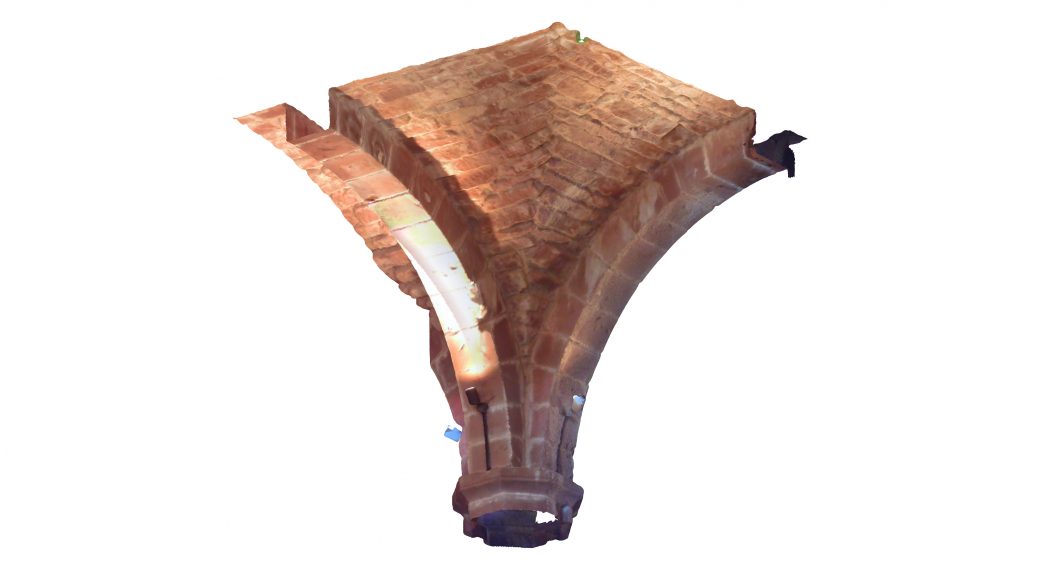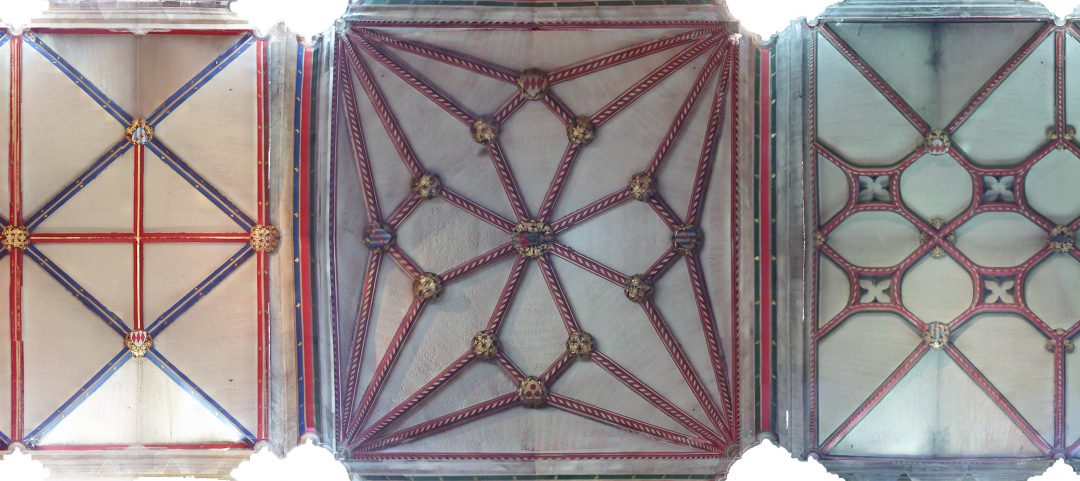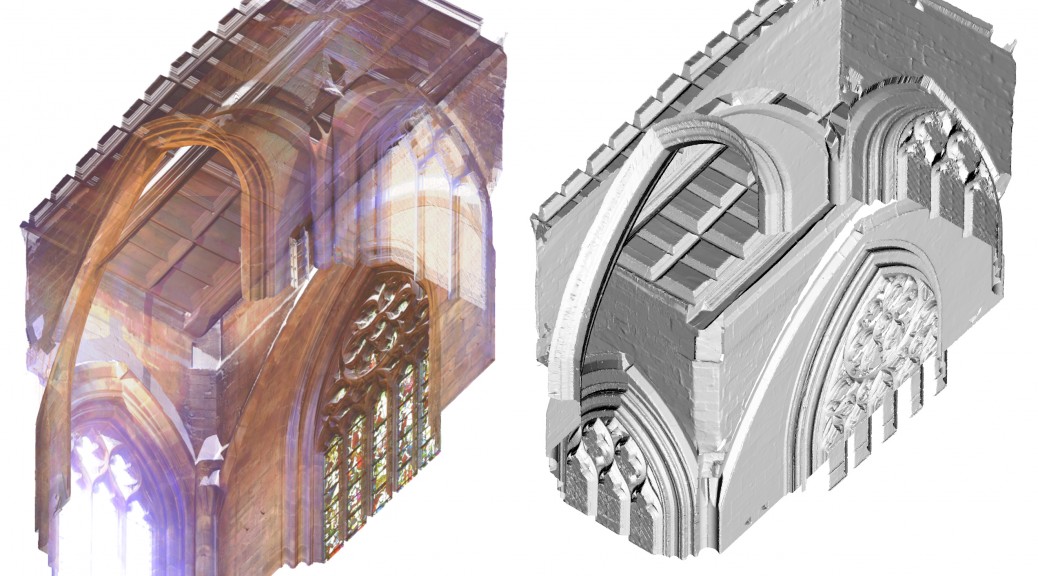The first of our guest reviewer sessions was organised on Wednesday 18th December in 2019. We asked one of the contributors, Richard Plant, to write a blog post about his experience of the event:
“Writing this from the enforced isolation of April 2020, the meeting held last December at the University of Liverpool seems like an unreal dream of collegiality. There were five of us in the room: Nick Webb and James Hillson from the project, Jenny Alexander from the University of Warwick, Stuart Harrison, Cathedral Archaeologist at York Minster and myself. Alex Buchanan, at home with a heavy cold, occasionally phoned in; something of a foretaste of things to come.
We had been invited to talk about the results of the scanning at Lincoln (in particular the crazy vault and eastern transepts) Norton Priory and the Romanesque parts of the east arm at Gloucester Cathedral.
What was perhaps most surprising about the discussion was how the application of sophisticated digital techniques brought us so often to improvised practices of putting vaults together, and the discussion was much enriched by being shared with such connoisseurs of worked stone as Jenny and Stuart. We worked our way backwards, chronologically, through the buildings. Much of the day was spent on the choir at Lincoln, where the scanning revealed great regularity in the cutting and geometry of the ribs. Yet despite this they also showed that the junction of ribs to walls, and sometimes ribs to ribs had often involved improvisation, with the masons cutting back or cutting in stones in order to make them fit the space. The scanning processes also reveal much about the geometry of the vault webs, which led to discussions of the general relations of ribs to the web (whether the rib is integral or simply sitting below) and also questions about the construction process including the ways and media in which the centering was made.
For Norton and Gloucester we were also dealing with groin vaults and arch construction, but many of the questions relating to their geometry are still complex. The team seemed particularly concerned with variable springing or impost heights, though in Romanesque buildings this is more usual than it seems to be in Gothic ones. Working on bays of irregular shape in Gloucester, both at crypt and choir level, produced many solutions including arches which seemed to have multiple centres. Whilst it might be inferred from this that the irregularities were due to settling, the stonework still appears entirely regular. Painstaking observations of this kind open new avenues of research and reinforces the importance of looking at the stones as well as scanning the geometry, as discussion of the abstractions of geometric schemes often proved to be closely linked to the practicalities of stone cutting. Equally, a better understanding of the geometry helps us to comprehend what the mason was aiming for and what strategies were available for putting their intentions into practice. Even if the answers to many of the questions posed by architectural historians are still not readily solvable, then at least the questions themselves can be posed with greater precision.
All in all it was an enjoyable as well as an informative day. The team are exemplary in their willingness to share and discuss their work, and in their openness to different approaches to their material. The prospects of further investigations are exciting, as will be the debates prompted by the publication of their findings.”


